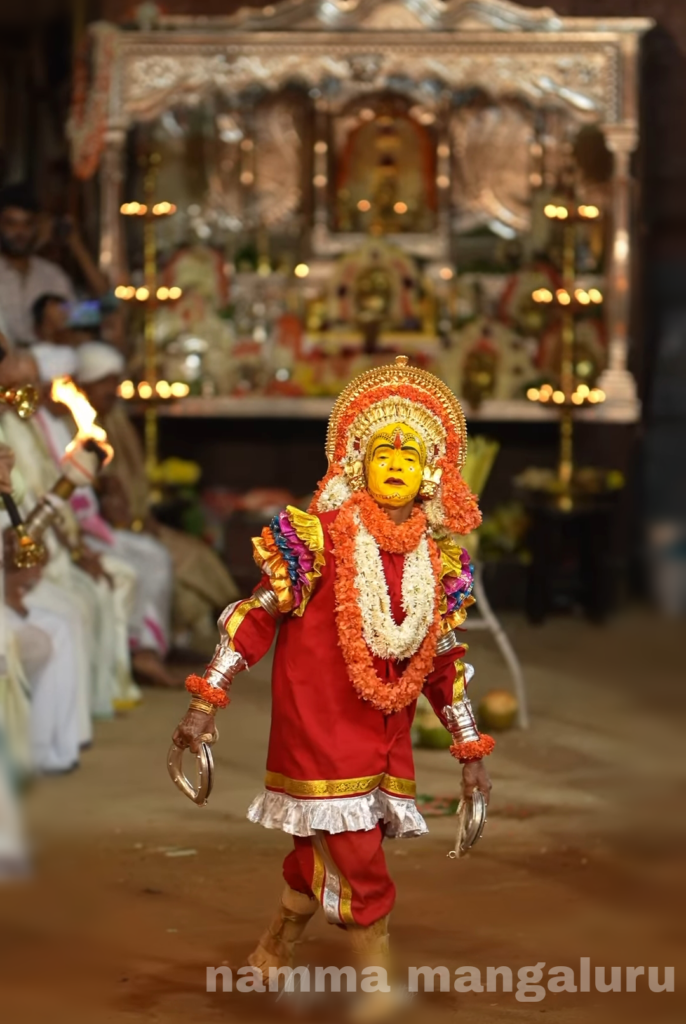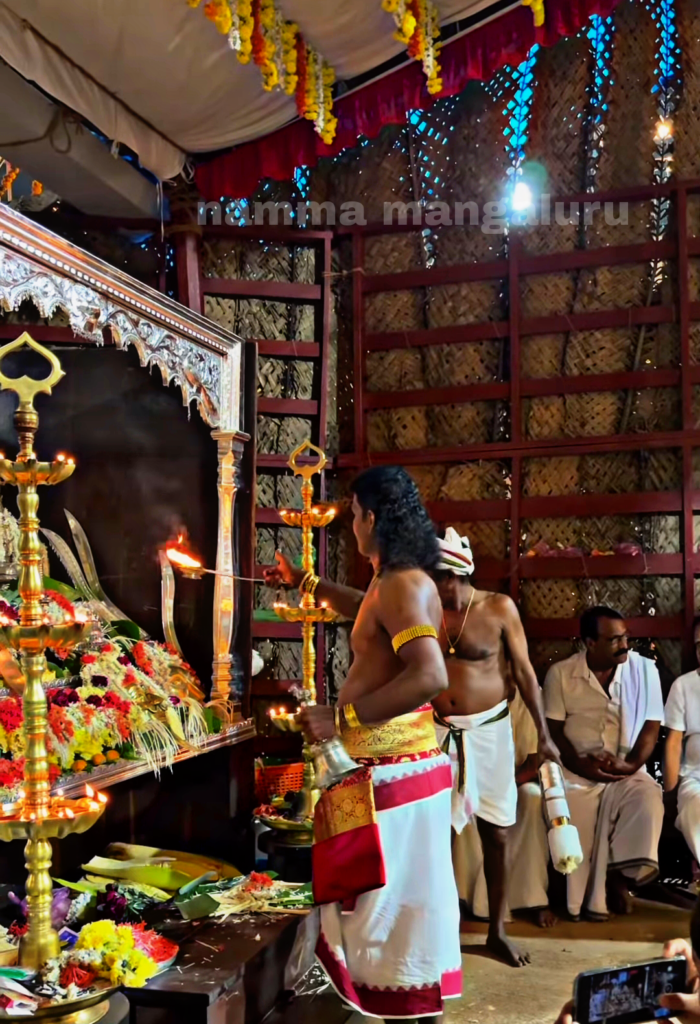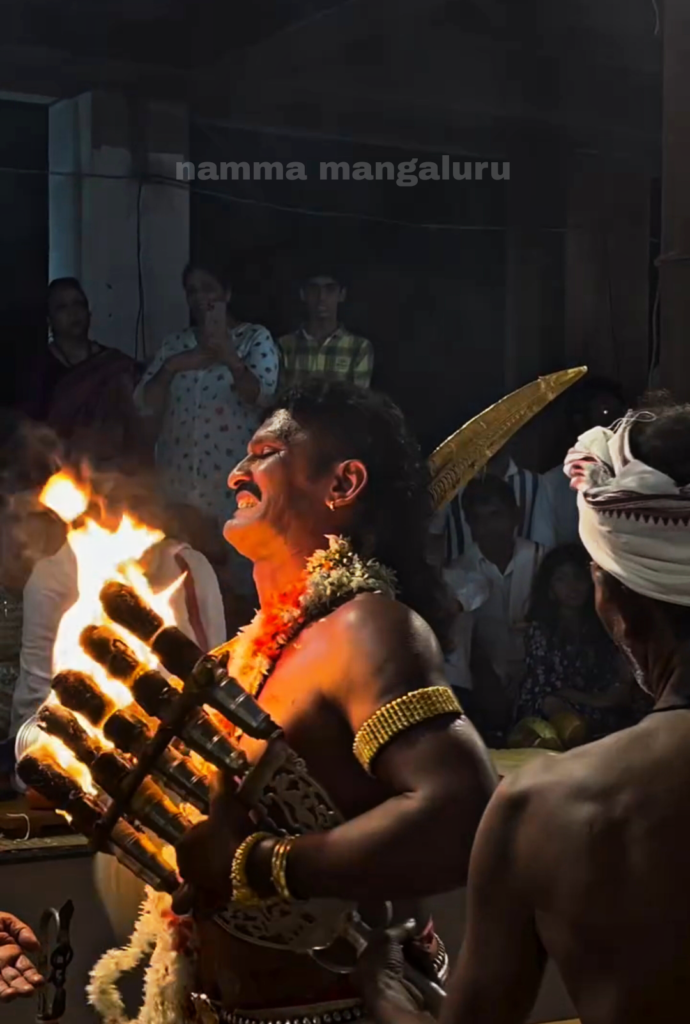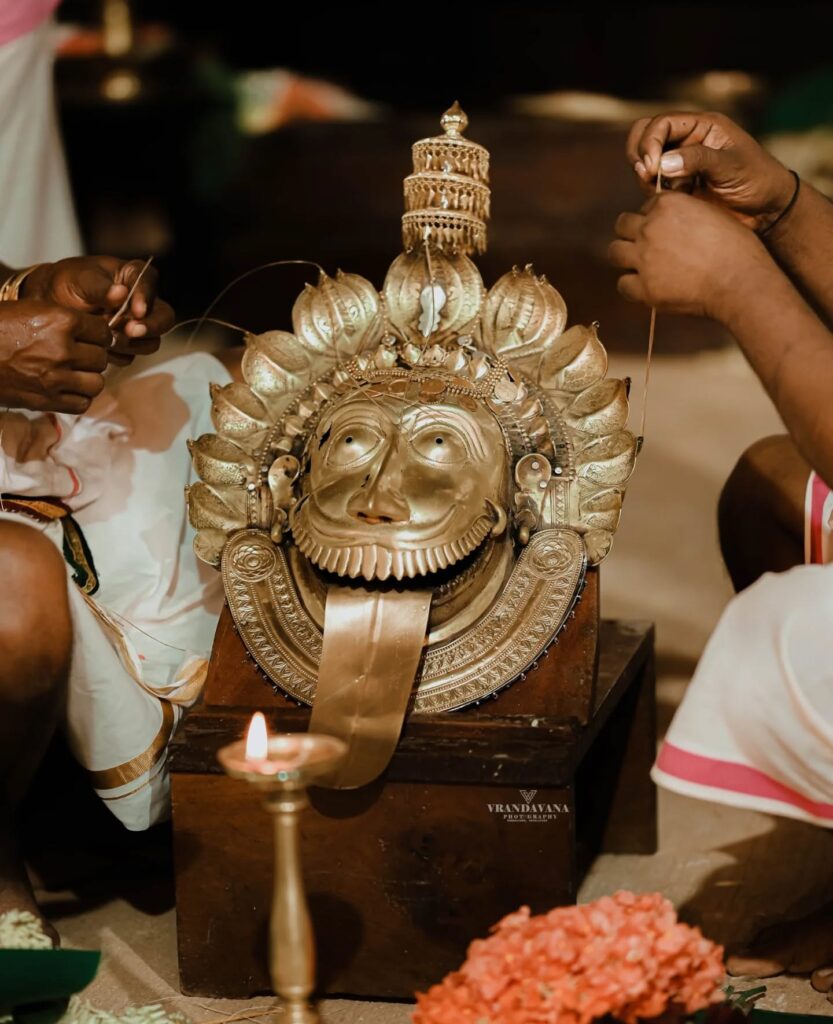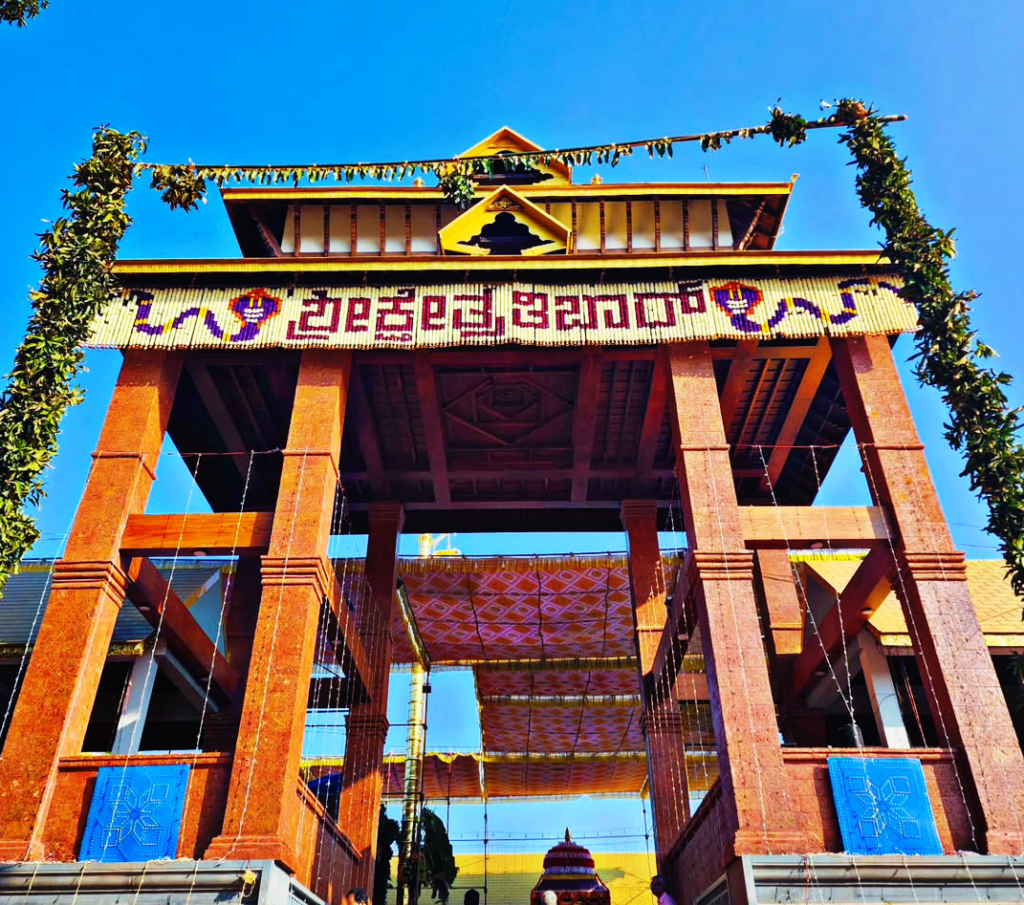
Story of Kodamanitaya Daiva
The Sri Kodamanittaya temple in Shibaroor, which stands in the lap of nature, located exactly 20 kms away from Mangalore city. The story of the birth of the Kodamanittaya daiva ( demi-god), as told in the Paddhana, is as follows. Kunjanalva, the king of Kodamani Barke, a famous Jain family in Tulunadu. One auspicious year, during the Tula Sankramana, he goes to the Ganga festival held at the Gangamula place, the source of the Ganga. After participating in the four-to-eight-day festival, he decides in his mind that he will return to his Kodamani Barke. On his return, a demi-god (daiva) appears and says that he will come to his Kodamani Barke. When the king asks what the name of the deity (daiva) is, it replies that its name is ‘Posa Bhutha Kumara (Hosa bhutha kumara ) ’ಹೊಸ ದೈವ ಕುಮಾರ’ and follows the king. The deity who came after them drank milk and water in the Kodange Gavasale Barke and came to the Kodamani Barke. Later, the deity who was established in the Kodamani Barke named himself ‘Kodamanithaya’ and gave protection to the Kunjanalva. Later, the daiva became famous in Tulu Nadu with the title ‘Kodamanithaya’. Later, it settled in many other places such as Perinje, Kodman, Paddodiguthu, Paddodi Barke, Padyarabettu, Kateelu, Kukke, Kuduma, Kelada Palace, Jakkongullaya Palace, Venur Chavadi, Kaapu, Aruva, Manjaladka, Madantyar, Nadu Nadodisthana, Mudai Ajjaisana, Lailaguthu, Puddottu Guthu, Iruvail, Badakodiguthu and many more.
The story of how “Kodamanithaya” came to Tibar (Shibaruru) from Iruvail
About 700 years ago, Thimmathi Kariwal of Tibara Gutthu (Shibarur) and Dugganna kaver of Ekkar, a devotee, after having darshan of Sri Durgaparameshwari, came to Kelabarke to offer their offerings to the ‘Posadaiva’ Kodamanittaya. There, they offer their offerings, receive gandha prasadam, quench their thirst, and then leave for their hometown. Then Kelabarke presents them with an ox and a cock (rooster) as gifts. While carrying the gifts, the two of them get thirsty on the way they tie the ox and the cock (rooster) to a nearby Ashwattha tree (peepal tree) and go to the nearby Naddodiguthu. There, they quench their thirst and fatigue; the ox and the cock gets possessed and acts strange surprised by this, they take the ox and the cock back to their homes. When Duggannakavera came to Tangadi Barke to ask the reason for the bullock’s possession, the Balliaya (Astrologer) says that the Rajan daivas (demi-gods) “Ori Ullaya and Dharmadhaiva Kodamanittaya” have come to you and should be established in their place. As per his words, they build a shrine (saana) at Derinjagiri (ekkaru ) and worship them. Meanwhile, the Thimmathi Kariwal of Tibaragutta comes to Tibar (Shibaruru) holding the gift given to him. While sleeping at night, he hears the lowing of cows in the cowshed. Then, remembering the bullock’s possession of the previous day, he asks the Balliaya (Astrologer) the next day. Understanding the reason for the arrival of Ullaya and Dharmadhaivas they happily decide to build a shrine for the daivas. For this, they invite Tyampa Shetru (expert in administering antidote for poisons) of Surinjegutta, tells them to do bhumi pooja (ಕೆಸರುಕಲ್ಲು) .
Story behind Theertha Bhavi (Holy Well) of shibaroor
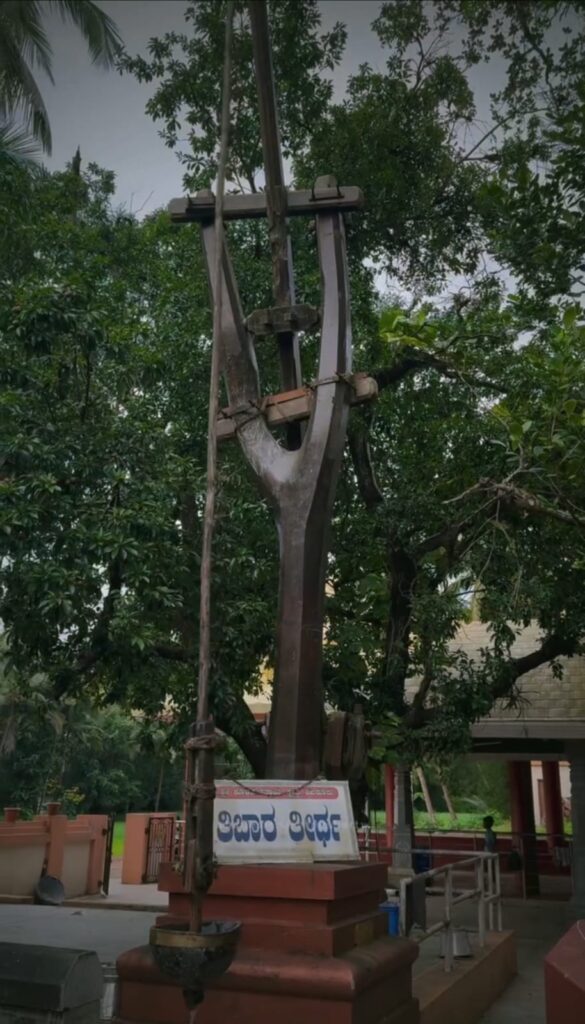
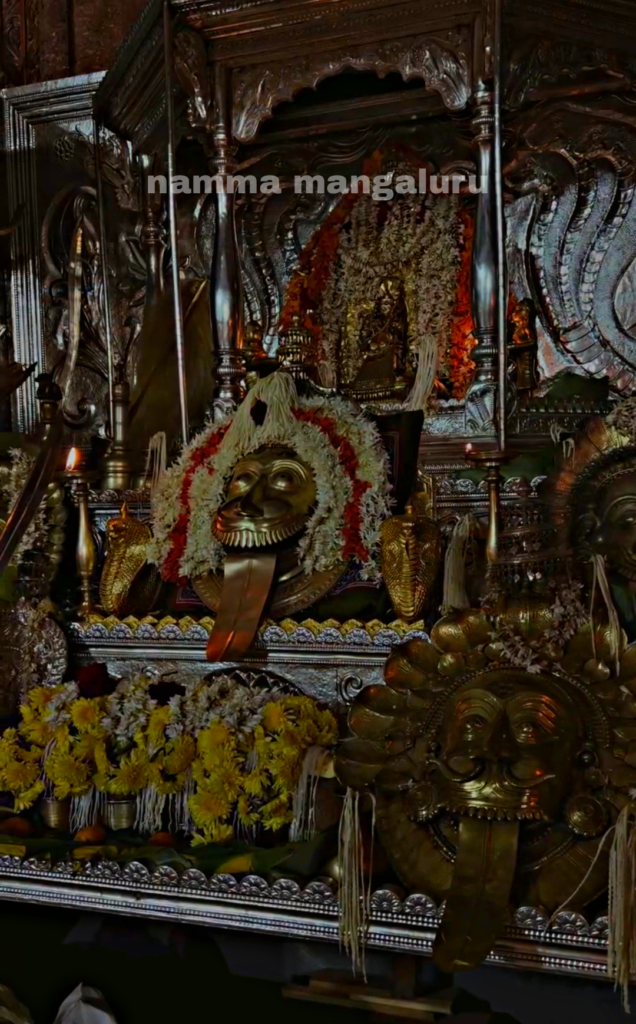
Tyampa Shetru, remembering the meritorious deed bestowed upon him, happily accepts and carries out the deed of putting mudstone at tibar. Then a temple is built at Tibaragutta. Tyampa Shetru thinks that there is no one to carry forward his legacy of preparing antidote for poison, he takes out his poison-absorbing stone from his bag, prays to daiva and puts it in the Tibaragutta well, saying, “From now on, let the water of this well and the divine gandha (prasada) be the medicine for the poison.” Due to this, the Kodamanittaya was given the title of ‘Vaidyanath’. The reason is that if one accepts the holy water and the divine gandha prasada found in the well of the Shibarur with devotion, the poison will be destroyed. Not only that, those who accept the holy water and the divine gandha prasada of the well will have the power to cure snakebite, skin disease, asthma and will also be free from the birth-retardant disease. There are many shining examples of people being saved by poisonous animals. The water from this well is lifted from a height using shadoof (a wooden hand operated tool for lifting water). More than fifty thousand devotees who visit the place during the annual nema receive this holy tirtha. Shibarur kshetra is located about 25 km from Mangalore. It is 2 km from the famous ‘Kateel kshetra’ and 3 km from Kinnigoli.
When the jatre is celeberated?
Every year, a festival is held at this shrine to hoist the flag (kodi) on the occasion of Dhanu Sankraman. The next morning, nema of Sri Ullaya, thula bhara seve, kanchil seve, urulu seve and the great offering of food are held. That night, the nema of Kodamanittaya, the bandi festival, and from the next day onwards, the nemotsavas of Kanteri Jumadi (Dhoomavati), Sarala jumadi (Dhoomavati), Jarandaya Daiva, Kaiyuru Jumadi (Dhoomavati) and Pilichamundi Daiva are held and then flag (kodi) is lowered at the end of the day which is marked as the end of the festival . From the hoisting of the flag to the lowering of the flag, food offerings are held daily. There is an inseparable connection between the Sri Kshetra Kateel and the Sri Kodamanithaya Kshetra of Shibaruri (Tibar). There is a tradition that during the annual fair, the daiva Sri Kodamanithaya visits Kateel. This is very beautiful.
Every year, a festival is held at this shrine to hoist the flag (kodi) on the occasion of Dhanu Sankraman. The next morning, nema of Sri Ullaya, thula bhara seve, kanchil seve, urulu seve and the great offering of food are held. That night, the nema of Kodamanittaya, the bandi festival, and from the next day onwards, the nemotsavas of Kanteri Jumadi (Dhoomavati), Sarala jumadi (Dhoomavati), Jarandaya Daiva, Kaiyuru Jumadi (Dhoomavati) and Pilichamundi Daiva are held and then flag (kodi) is lowered at the end of the day which is marked as the end of the festival . From the hoisting of the flag to the lowering of the flag, food offerings are held daily. There is an inseparable connection between the Sri Kshetra Kateel and the Sri Kodamanithaya Kshetra of Shibaruri (Tibar). There is a tradition that during the annual fair, the daiva Sri Kodamanithaya visits Kateel. This is very beautiful.
There is a special presence of Naga in Shibaruru. There is direct evidence that if you accept the Tirtha there today, the poison of any snake will be cured. The holy river Nandini also flows next to the Shibarur Kshetra. It originates in Kanakagiri in Mijar and crosses the areas of Kateel, Shibarur and Pavanje before joining the sea. Kodethur and Attur are the towns near by. During the annual fair of Sri Arasu Kunjaraya, Bhandara of Sri Shibarur Kodamanithaya comes and prayers are also held.

